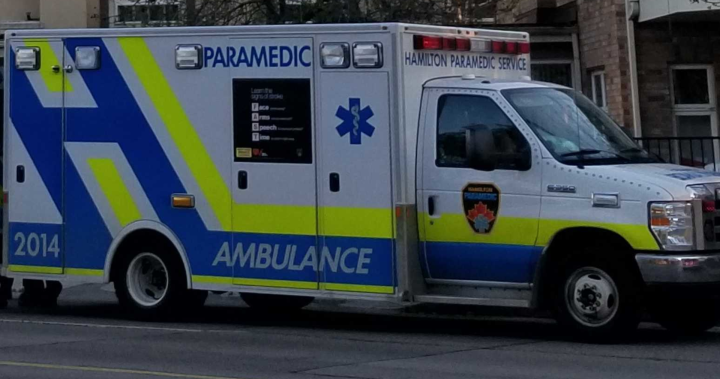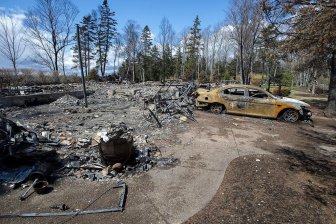Trauma expert suggests Yosif Al-Hasnawi only had minutes after shooting in central Hamilton – Hamilton
A trauma centre expert from one of Toronto’s top hospitals suggested a trip to Hamilton General Hospital for the ailing Yosif Al-Hasnawi may have increased his chances of survival.
Much of day eight in the trial of two paramedics, accused of failing to provide the necessities of life, featured testimony from a trauma surgeon of 21 years at St. Michaels hospital, Dr. Najma Ahmed.
The line of questioning on Friday revolved around medical literature and reports, including one from Ahmed, documenting Al-Hasnawi’s condition and hypotheticals regarding the diagnosis and the time it took to get him to the appropriate care.
The 19-year-old Brock University student and aspiring doctor was shot with a .22 calibre handgun just before 9 p.m. on the evening of Dec. 2, 2017, just steps away from a mosque he had attended.
The victim was transported to St. Joseph’s hospital and was pronounced dead less than an hour later.
According to Hamilton police records, it took 38 minutes for Al-Hasnawi to reach the trauma centre at St. Joseph’s hospital after paramedics Christopher Marchant and Steve Snively arrived on the scene.
In testimony on Wednesday, ER Dr. Andrew Healy said when he first received Al-Hasnawi, he couldn’t detect a pulse. Despite efforts to resuscitate him, the patient was pronounced dead 19 minutes later.
A rapid loss of blood
On Friday, Crown attorney Scott Patterson showed Ahmed a number of exhibits referencing Al-Hasnawi’s injury and asked for her opinion on the severity of the 19-year-old’s condition after he was shot.
Patterson started the line of questioning with an external autopsy photo of Al-Hasnawi’s stomach and the bullet wound near his belly button and whether or not the specialist could determine how deep his injury was.
Ahmed responded “no”, and then proceeded to indicate that a “projectile” hitting a body doesn’t “usually come to rest on the skin.”
Although admitting she was not a firearms expert, she told the Crown that a hollow point bullet, like the one that hit Al-Hasnawi, could make “a blast injury” which causes “a high degree of injury to the organs.”
Ahmed said a wound like Al-Hasnawi’s perforated the right common iliac artery, the largest vein in the body, causing a rapid loss of blood from a patient’s circulatory system.
She went on to tell the court and Patterson that lack of blood seen in Al-Hasnawi’s injury was “not uncommon.”
“These are projectiles which enter body cavities (and) are intended to injure the organs inside those internal, inside body cavities,” said Ahmed.
She said with the loss of blood, a typical patient’s diastolic blood pressure rises to maintain blood flow and the body attempts to clot blood. Typically that leads to tachycardia, a heartrate over 100 beats per minute.
A patient may begin to become “anxious and restless” when the blood flow to the brain begins to diminish. Ahmed told the court that stage can make a patient feel disoriented and perhaps sweaty before the lack of oxygen to tissues and the brain brings on a comatose state before death.
When Patterson asked how the injury can be treated, Ahmed said the patient would need blood, resuscitation and hemorrhage control.
“What this patient needs is the rapid, immediate restoration of blood volume with uncrossed, matched blood and expeditious transportation to the operating room within minutes,” Ahmed said.
Lead trauma hospital
The Crown also walked Ahmed through exhibits documenting Al-Hasnawi’s declining vital signs recorded by paramedics on the night of the shooting and asked for her opinion on the 19-year-old’s chances of survival.
Patterson showed the doctor an ambulance “patch” from 9:35 p.m. on Dec. 2 when Al-Hasnawi was still in transport to St. Joe’s and asked what the numbers mean, particularly a heartrate of 45.
Ahmed called it an “ominous sign” and said the heart muscle was becoming “deprived” of blood and oxygen.
The Crown then asked her opinion on whether a patient in this state would have a better chance of surviving if taken to an “equidistant” lead trauma hospital?
Read more:
Younger brother of Yosif Al-Hasnawi says paramedics didn’t do their job the night he died
Ahmed said “the best odds” would be a transport to such a facility, and estimated a “number greater than zero” between 10 and 15 per cent if he had gone to a lead trauma hospital.
The Crown then asked a hypothetical question on what the odds would be for a patient with a pulse and heartrate of about 150 arriving at a lead trauma hospital.
She said “50 per cent.”
In a cross-examination, Marchant’s attorney Jeff Manishen asked Ahmed if the injury could be considered “lethal” and that the 15 minutes between the time Al-Hasnawi was shot and the arrival of paramedics was “critical.”
Ahmed agreed on both counts.
He then suggested that the survivability would require immediate diagnosis and treatment and that it may not be better than 50 per cent.
Ahmed said it would then likely be 40 to 60 per cent, according to studies.
Manishen went on to a line of questioning about the initial stages of shock and suggested that the “physiological aberrations” of a shooting victim maybe subtle to even the most experience physician.
Read more:
‘Tell him to stop acting’ father of Yosif Al-Hasnawi claims paramedic said on night of son’s death
Ahmed agreed that the initial stages of hemorrhagic shock “can be quite subtle.”
The defence also focused on an “extrapolation” from medical literature, that Ahmed referred to in her report, which suggested that a person “shot in the lobby of a trauma centre” suffering an iliac artery injury likely only has a 51 per cent chance of surviving at best.
The doctor estimated the chance is 50 per cent if there’s immediate recognition of the injury and the utilization of assets in a trauma centre.
Manishen also asked whether a two minute transport to a non-lead trauma centre compared to nine-minute arrival at lead trauma centre would make a difference.
Ahmed suggested the patient would likely die since it probably would take 20 or 30 minutes to find blood at the non-trauma centre.
In a re-examination, Patterson asked what kind of damage a person might endure if shot by a bb gun.
Ahmed suggested in the face and chest would be bad, but a hit to the abdomen is less likely to cause much damage since it wouldn’t penetrate the abdominal wall.
“Should have kept more of an open mind”
Friday’s court date started with a cross-examination of Hamilton police officer Sgt. Nesreen Shawihat the day after she testified for the Crown.
Shawihat was on patrol the night of the shooting and arrived at the scene just after 9 p.m.
The officer would join paramedics and Al-Hasnawi for about five minutes in and out of an ambulance before the journey to St. Joe’s hospital.
During questioning from defence attorney Jeff Manishen, Shawihat confirmed that she heard paramedics say they were taking Al-Hasnawi to St. Joe’s hospital for emergency psychiatric assessment and medical treatment.
She agreed with Manishen when he characterized the paramedic’s actions as professional and said that the decision to go to St. Joe’s “seems to be a way that the situation could be handled.”
Shawihat would agree with Manishen’s description of having “tunnel-vision” going on the basis of what information was available at the time.
“Yeah, we were trained to think broader, should have kept an open mind until we confirmed what type of weapon was used,” Shawihat said.
Before her dismissal from the court on Friday, questions from Justice Harrison Arrell confirmed that Shawihat spent about five minutes in the ambulance with the paramedics and Al-Hasnawi.
She also confirmed for the judge that she has seen a BB gun wound and gunshot wound in the past, and agreed that what she saw in 2017 was “more consistent” with a BB gun.
Day nine of the judge-only trial resumes Monday morning. Over the next few weeks, Justice Harrison Arrell is expected to hear testimony from numerous witnesses, including emergency responders, Al-Hasnawi’s friends and family, and bystanders who witnessed the teenager’s final moments.
© 2020 Global News, a division of Corus Entertainment Inc.




